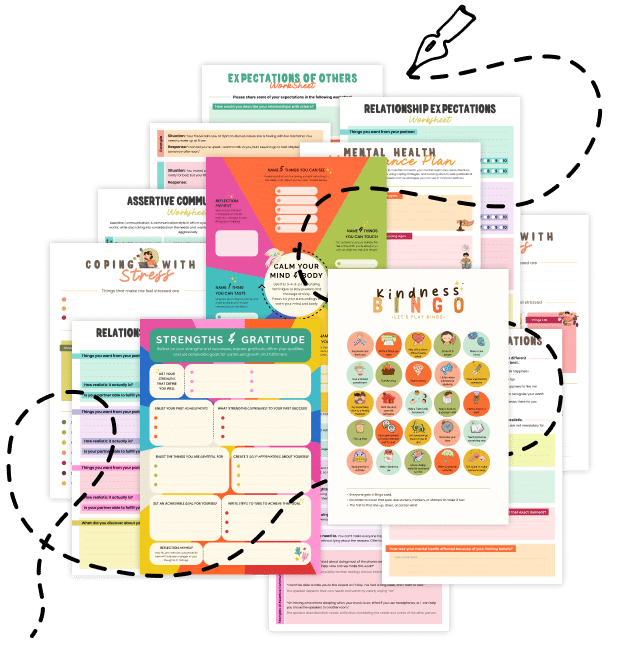20 Things About Tiered Goal Setting
Organize your ambitions, maintain steady progress, and adapt to life’s curveballs with Tiered Goal Setting—an approach that breaks big dreams into structured, manageable levels.
1. What Is Tiered Goal Setting?
Tiered Goal Setting is a system where you categorize objectives into levels or “tiers.” Each tier builds upon the last, providing a clear roadmap from small, achievable steps to lofty, long-term aspirations.
2. Why Tiered Goal Setting Beats One-Size-Fits-All Goals
Setting a single, giant goal can feel daunting—and lead to procrastination or burnout. Tiers let you ease into challenges, celebrating milestones along the way and boosting motivation.
3. The Basic Structure of Tiered Goal Setting
- Tier 1: Immediate, simple tasks (e.g., “Write 200 words today.”)
- Tier 2: Medium-range goals (e.g., “Draft a chapter by the end of the month.”)
- Tier 3: Long-term or “stretch” ambitions (e.g., “Complete and publish a book within a year.”)
4. Encourages Consistency
When each tiered step is clearly defined, you’re more likely to tackle tasks systematically. Progress becomes a steady climb instead of a single, intimidating leap.
5. Aligning Tiered Goal Setting with Values
Because you’re working in layers, you have repeated opportunities to check: “Does this goal still reflect my core values?” This helps you refine or pivot before investing too much time in an unaligned direction.
6. Reduces Overwhelm
Breaking a big vision into small, approachable tasks keeps stress in check. You see where to start, and each completed step fuels the next wave of confidence.
7. Adaptive Planning
Life happens—deadlines shift, priorities change. Tiered goals are easier to tweak. You can adjust or reorder tiers without tossing out your entire plan.
8. Builds Momentum
Small wins at lower tiers act like stepping stones. As you hit these mini-milestones, the rush of achievement propels you forward, reinforcing a “can-do” mindset.
9. Clarity in Time Management
Tiered goals help you map out your day, week, or month. You know which tasks are immediate priorities and which belong to future tiers, preventing you from getting stuck in a to-do list tangle.
10. Prevents Burnout
By spacing out challenges and celebrating incremental successes, you sidestep the all-or-nothing mindset that leads to exhaustion. Progress stays balanced and sustainable.
11. Encourages Strategic Thinking
Defining tiers forces you to think about prerequisites and dependencies. This fosters a strategic mindset—identifying what resources, skills, or collaborations you need to move upward.
12. Bridges Intentions and Actions
Tiered goals naturally connect what you want (big picture) with daily execution (small tasks). This closes the Intention-Behavior Gap by translating abstract visions into concrete steps.
13. Fosters Resilience
When unexpected obstacles arise, you don’t lose sight of the end goal. You can momentarily focus on a lower tier, regroup, and then ascend again when circumstances allow.
14. Works Across Life Domains
From fitness plans to career ambitions, Tiered Goal Setting is versatile. Whether you’re training for a marathon or building a portfolio, layering goals sets a clear path.
15. Teaches Self-Efficacy
Accomplishing tier-by-tier builds confidence in your capabilities. Each successful step confirms, “I can do this,” empowering you to aim for more ambitious tiers.
16. Collaboration Made Easier
For team or group projects, tiers delineate tasks across different timelines. Everyone knows what’s immediately due and what’s on the horizon, making collaboration more transparent.
17. Reviewing and Refining
Regular check-ins at each tier give you a chance to analyze what worked, what didn’t, and why. Tweak your plan to stay aligned with your evolving goals and realities.
18. Avoiding Plateau
Once you hit a major goal, it’s easy to stagnate. Tiered systems encourage ongoing growth—after reaching Tier 3, you might add new tiers or shift your focus to entirely different objectives.
19. Embraces Failure as Data
If something stalls at a certain tier, you learn early what adjustments are needed—rather than failing a big, singular goal without feedback along the way. Each tier is a checkpoint, not a final verdict.
20. Related Topics to Explore
- Implementation Intentions: Turn big goals into specific action steps using “if-then” statements.
- Chunk Your Work: Aligns well with tiered strategies for gradual progress.
- Plan Continuation Bias: Understand why we sometimes stick to failing plans—tiered goals help you pivot earlier.
- Adaptive Confidence: Cultivate a belief in your ability to navigate changing goalposts and challenges.
Quick Tips to Boost Tiered Goal Setting
- Brainstorm Backwards: Envision your ultimate objective first, then work backward to outline sub-goals.
- Set Clear Criteria: Define what “success” at each tier looks like—be specific about metrics or outcomes.
- Celebrate Milestones: Mark each tier’s completion with a small reward or acknowledgment of your progress.
- Stay Flexible: Expect the unexpected—be ready to shift timelines or rearrange tiers as life evolves.
- Revisit Regularly: Schedule routine reviews to confirm each tier still aligns with your overarching vision and values.
Tiered Goal Setting helps break big dreams into clear, bite-sized steps, ensuring you maintain momentum, adapt to real-world changes, and celebrate incremental wins. By structuring your goals across multiple levels, you’ll strike a balance between ambition and achievability. Share this approach with friends or colleagues—help them escape the all-or-nothing mindset and climb steadily toward success!


